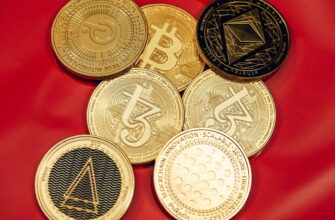Understanding the Stablecoin Titans: USDT and USDC
Stablecoins have revolutionized cryptocurrency by offering price stability in volatile markets. As blockchain-based tokens pegged to stable assets like the US dollar, they enable seamless trading, remittances, and DeFi participation. Tether (USDT) and USD Coin (USDC) dominate this space, collectively representing over 80% of the $160B+ stablecoin market. But what sets these giants apart? This guide breaks down their key differences in transparency, reserves, regulation, and real-world utility.
What is Tether (USDT)?
Launched in 2014, USDT is the original stablecoin pioneer issued by Tether Holdings Limited. As the most widely adopted stablecoin:
- Market Dominance: $110B+ market cap across 14 blockchains including Ethereum and Tron
- Backing Structure: Reserves include cash, commercial paper, and other assets
- Global Adoption: Preferred on Asian exchanges and peer-to-peer markets
What is USD Coin (USDC)?
Created in 2018 by Circle and Coinbase through the Centre consortium, USDC emphasizes regulatory compliance:
- Transparency Focus: Monthly attestations by top accounting firms
- Reserve Composition: 100% cash and short-term U.S. Treasuries
- Institutional Trust: Backed by BlackRock and regulated under US money transmission laws
USDT vs USDC: 5 Critical Differences
- Transparency Levels:
USDC publishes detailed monthly reserve reports audited by Deloitte. USDT provides quarterly attestations but faced historical scrutiny over reserve disclosures. - Reserve Composition:
USDC holds exclusively cash and U.S. Treasuries. USDT reserves include commercial paper (down from 45% to under 2% in 2023), secured loans, and other assets. - Regulatory Oversight:
USDC operates under NYDFS supervision with US-based compliance. USDT is registered in the British Virgin Islands with less direct US regulatory oversight. - DeFi Integration:
USDC leads in Ethereum-based DeFi protocols (65% market share). USDT dominates Tron network transactions and exchange trading pairs. - Stability Track Record:
Both maintained 99%+ peg stability since 2020, though USDT temporarily depegged during 2022’s Terra collapse, while USDC dipped during 2023’s banking crisis.
Choosing Between USDT and USDC
Your ideal stablecoin depends on use case:
- For Traders: USDT offers wider exchange support and liquidity
- For DeFi Users: USDC provides deeper protocol integration
- Risk-Averse Holders: USDC’s transparent reserves may appeal more
- Cross-Border Payments: USDT’s global reach advantages remittances
FAQ: Stablecoin Showdown
Q: Which stablecoin has better regulatory compliance?
A: USDC operates under stricter U.S. regulations with NYDFS-approved reserves, while USDT follows international standards.
Q: Are USDT reserves fully backed?
A: Tether claims full backing but has faced lawsuits over reserve disclosures. Their latest attestation shows 104% reserves against liabilities.
Q: Why choose USDC over USDT?
A: USDC offers superior transparency for institutional users and dominates Ethereum-based DeFi applications.
Q: Can both coins maintain their dollar peg during crises?
A: Both demonstrated resilience – USDT recovered its peg within hours during 2022 volatility, while USDC rebounded after temporary depegging during the 2023 banking crisis.
Q: Which has lower transaction fees?
A: Fees depend on blockchain networks rather than the stablecoins themselves. USDT on Tron typically offers lower costs than USDC on Ethereum.
Q: Are there geographical preferences?
A: USDT leads in Asia and emerging markets, while USDC has stronger adoption in North America and institutional circles.
The Verdict
USDT and USDC both deliver dollar stability through distinct approaches. USDC’s regulatory-first model appeals to institutions and transparency seekers, while USDT’s liquidity and global reach benefit traders and everyday users. As stablecoin evolution continues, both remain essential infrastructure for the digital economy – choose based on your specific needs for transparency, use case, and risk tolerance.








